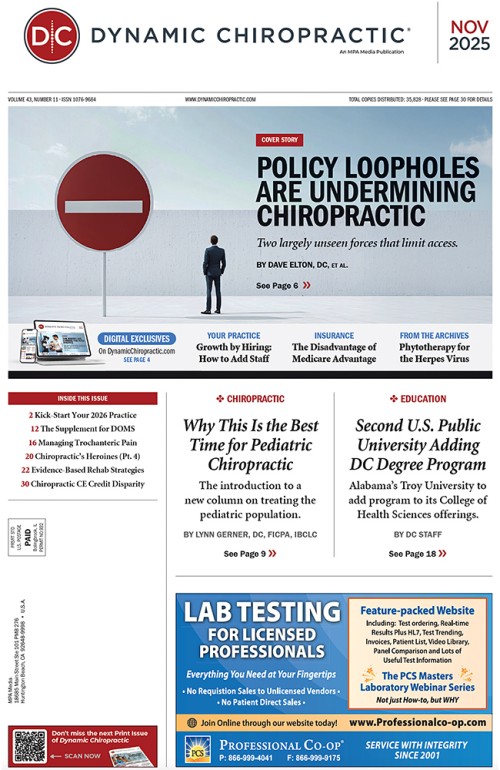Recent laws in New Jersey and California represent a disturbing trend that will negatively impact a practice’s ability to collect monies from patients, as well as expose them to significant penalties if the practice does not follow the mandatory guidelines to a T. Please be aware that a similar law may be coming to your state. The time to act is before the law is passed.
The Best of Times, the Worst of Times (Pt. 1)
We are at a pivotal time for the chiropractic profession, with both significant challenges and opportunities. The goal of this three-part series is to identify actions that will enable DCs to realize their full potential as an essential part of an effective, efficient and patient-centered healthcare system. We start the series by examining two largely unseen forces that profoundly shape the environment in which DCs practice.













